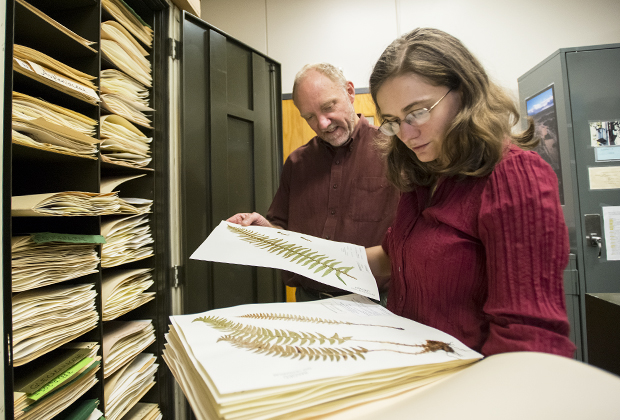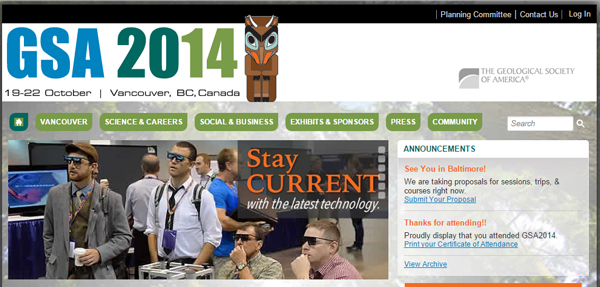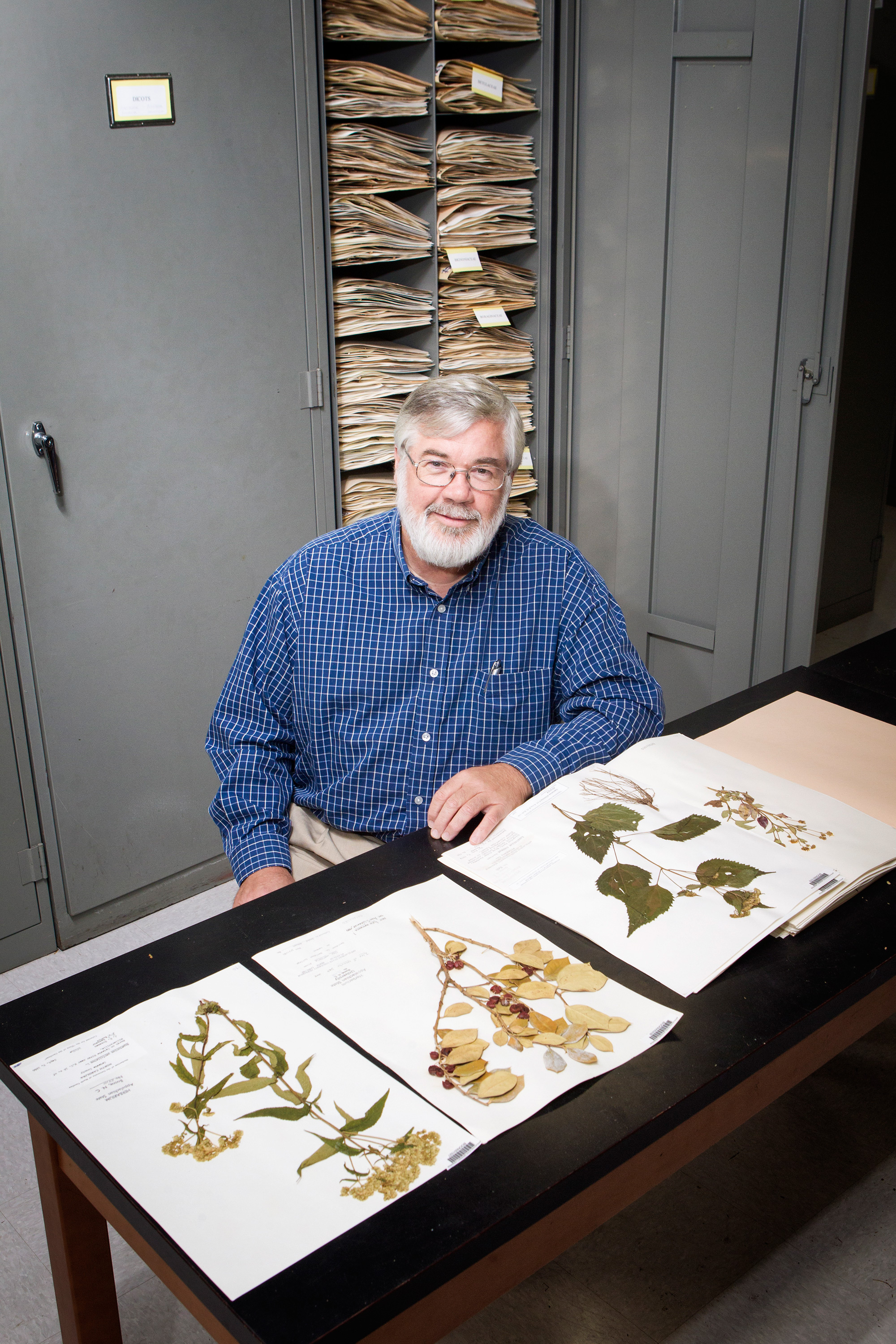Digitization
CMU Herbarium Highlighted for TCN Collaboration
Photo provided by Central Michigan University / Steve Jessmore
Boise State University Highlights Herbarium’s Digitization Project

Jim Smith and Alexa DiNicola sort dried plant specimens from the collection.
Photo courtesy of Boise State University Photo Services.
GSA 2014 Digitization Symposium Attracts 33 Presentations, 4 Posters, and More than 75 Participants
 Arguably the most important joint gathering of paleo and geo scientists in North America, the annual conference of the Geological Society of America (GSA) regularly attracts more than 5,000 participants, several hundred posters and presentations, and an array of vendors and exhibitors.
Arguably the most important joint gathering of paleo and geo scientists in North America, the annual conference of the Geological Society of America (GSA) regularly attracts more than 5,000 participants, several hundred posters and presentations, and an array of vendors and exhibitors.
Santa Barbara Workshop Draws 50 Participants
iDig’dBio@ FSU’s Herbarium Imaging Blitz a Success!

By the numbers:
Short Course Announcement: Basics of CT Data Acquisition, Visualization, and Analysis
SHORT COURSE: Basics of CT Data Acquisition, Visualization, and Analysis
DATE: 22-26 February 2015 (22 and 26 are travel days)
News Article Showcases Wisconsin State Herbarium-Led Digitization Project

Kenneth Cameron, director of the Wisconsin State Herbarium
Photo: David Tenenbaum/University of Wisconsin-Madison
New Grant Will Expand Access to Land Snail Collection

Appalachian State University’s Webpage Highlights New Digitization Project

Zack E. Murrell, a professor at Appalachian State University, was given recognition in an article released by Appalachian State University, University News for receiving an NSF grant for $2.5 million dollars to digitize and create a database for more than 3 million plant specimens across the Southeast.
Gearing Up for the Beyond the Box Digitization Competition
"The Beyond the Box Digitization Competition will award $1 million to the person or team who creates a technology that increases the speed and accuracy of digitization of a drawer of insect specimens and their associated data. The competition is a joint project of the U.S. National Science Foundation and the American Institute of Biological Sciences."
SPNHC 2014 Focus on Digitization: Cardiff provides an international view
We, the symposium conveners Elspeth Haston (RBGE), Elizabeth Ellwood (iDigBio), and Deborah Paul (iDigBio) were thrilled (gulp!) when an originally-proposed half-day symposium turned into a full-day symposium at SPNHC 2014. The topic? - Progress in the Digitisation of Natural History Collections.
New Journal Article Defends the Importance of Specimen Collections
“Given increasing rates of habitat loss and global change, we believe that responsibly collecting voucher specimens and associated data and openly sharing this knowledge (for example, through GBIF, iDigBio, and VertNet) are more necessary today than ever before.”
Volunteering for the Summer at NYBG and AMNH

By Chelsea Fowler
iDigBio and NANSH Host Small Herbarium Digitization Workshop at Botany 2014
Workshop Opportunity: Leveraging Digitization Practices Across Multiple Domains


Specify Workshop for Paleontologists and Collaborating to Make it Easier to Start Digitizing
by Deb Paul (on Twitter @idbdeb)
Have you used Specify? Or, are you looking for an easy way to install and try this collection management software?
Specify Paleo Collections Workshop - training, new technology, and data models
guest blog by Talia Karim (University of Colorado) and Una Farrell (University of Kansas)
iDigBio Digitization Workshop at TORCH 2014

by Deb Paul, Joanna McCaffrey, Kevin Love
Recruiting, Supporting, and Retaining Small Collections Workshop: A Student’s Perspective

by Abigail Hollingsworth
Biological Collections Digitization in the Pacific
Digitizing Source Materials Workshop: A Step Toward Best Practices
 The source materials associated with biodiversity collections often contain the most complete and sometimes most accurate descriptions of localities, collecting events, and even the collection objects themselves of any extant documentation.
The source materials associated with biodiversity collections often contain the most complete and sometimes most accurate descriptions of localities, collecting events, and even the collection objects themselves of any extant documentation.







